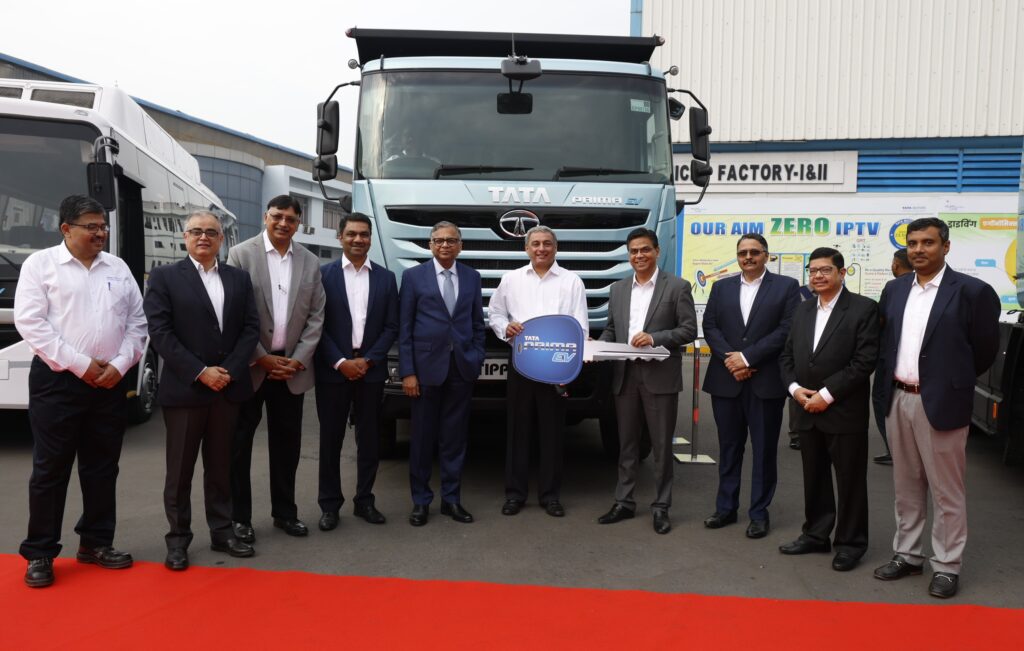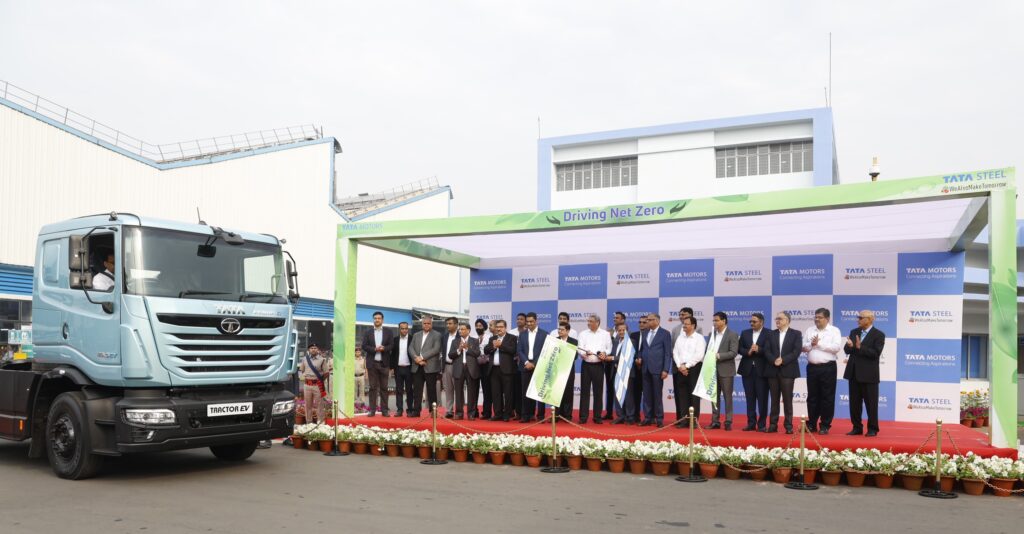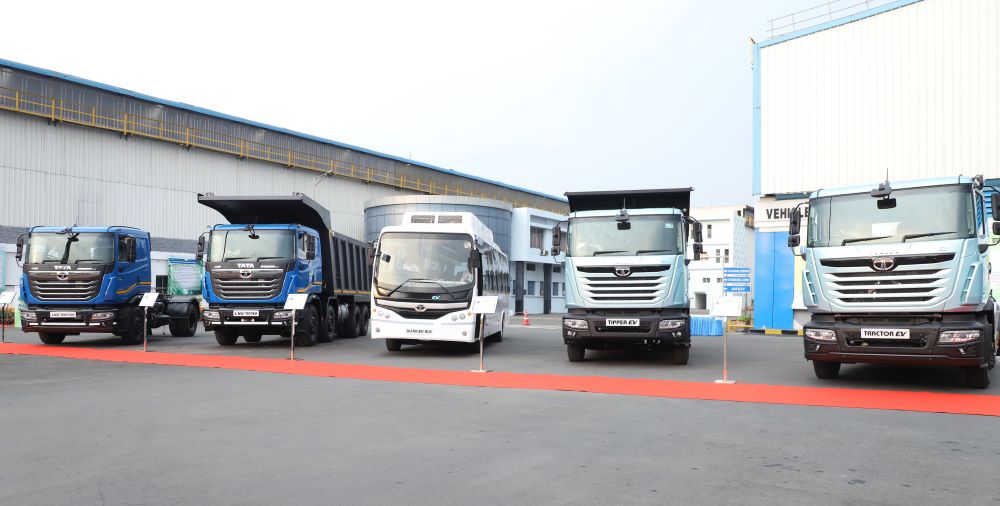To make Tata Steel’s supply chain greener with tractors, tippers and buses powered by LNG and Batteries

Tata Motors has flagged off its next-generation, green-fuel powered commercial vehicles to Tata Steel. The fleet includes Prima tractors, tippers and the Ultra EV bus, powered by Liquefied Natural Gas (LNG) and battery electric technologies. The vehicles were flagged off by Tata Sons’ Chairman, N Chandrasekaran, as part of the Tata Group’s Founder’s Day celebrations in Jamshedpur. Present at the ceremony were T V Narendran, CEO & Managing Director, Tata Steel and Girish Wagh, Executive Director, Tata Motors, along with senior members of their leadership teams.

Speaking about the long-standing partnership with Tata Motors, T. V. Narendran, Chief Executive Officer & Managing Director, Tata Steel said: “This delivery marks another significant milestone in our long-standing partnership with Tata Motors. As leaders in our respective industries, Tata Steel and Tata Motors share a common vision for sustainability and innovation. By harnessing our collective expertise and resources, we are not only revolutionising our industries but also leading the way in environmental responsibility. Together, we are committed to driving positive change and delivering eco-friendly solutions that not only benefit our businesses but also contribute to a greener tomorrow.”

Speaking about the future-ready vehicles being flagged-off, Girish Wagh, Executive Director, Tata Motors said, “Tata Motors is driving the global megatrend of sustainable, safe and smart mobility in India. Our green fleet of commercial vehicles will accelerate Tata Steel’s efforts towards making its supply chain carbon neutral. We have collaborated with them and their transportation partners to design holistic solutions for enhancing functionality, performance, connectivity and safety. Every aspect of these vehicles has been purposefully augmented to cater to varied duty cycles and special applications. We look forward to strengthening our historic partnership in our respective quests of reducing carbon footprint and achieving net-zero emissions by 2045.”